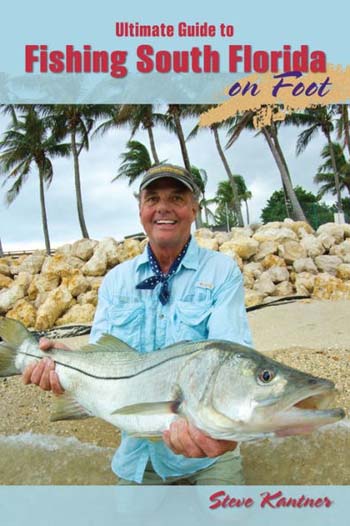
Thadeus Ragan, professional tournament angler and guide with a day off Lake Okeechobee 10-pounder. Ragan photo.
There’s cause to agree with the consensus; largemouth bass is the best gamefish for anglers of any stripe
By Skip Clement, publisher emeritus
[dropcap]I[/dropcap]n Pennsylvania I rarely fished for bass, smallmouth or largemouth bass, unless the happenstance of their presence showed because of an accidental catch. Throughout PA and neighboring states they were concentrated in big rivers, more so in lakes, and a target for early spring; mostly.
A more likely non-trout or steelhead ambition was crappie, which got generically labeled “panfish.” A bucket full were fun on a 3/4-weight, easy to catch with thumbnail size poppers [green and yellow if I remember correctly], easy to clean and cook, and nice to the taste buds along with a cold brew and an illegal Cuban at the campfire.
Panfish were readily found in my past neck of the woods, Western PA, northern West Virginia, southeastern eastern Ohio, and Maryland, in hundreds of century-old and abandoned rock quarries and surface mining pits. Accessing often required farmers permission, which was almost always granted with a request for shared and cleaned fish.
Mecca
Moving to South Florida, the mecca for large, largemouth bass, dawned a whole new bass experience. As luck would have it my neighbor was guide/author Steve Kantner, and Pat Ford introduced me to Thadeus Ragan, a tournament-level bass fisherman with a taste for fly fishing – I was in good company.
Bass fishing in South Florida was via bomb craters leftover from WWII bombing practice runs near Fort Lauderdale, ponds, municipal impoundments, golf courses, and a canal system ushered into play in the Everglades that anglers navigated via bass boat or skiff with walk-in a very productive alternative.
Adventurous paddlers using a canoe or kayak can go from oceanside [Everglades] to gulf side [Gulf of Mexico] by portaging the man-made labyrinthian canal system 79.7 miles – as the crow flies over at least four days or a week if fishing the intent of the trip. The trip is limited to winter months only – mosquitoes larger than sparrows guard the Everglades year round’.
To learn everything there is to know about largemouth bass fishing, no matter where you live, just Google the fish commission or department of natural resources in any of 49 states [neither Micropterus salmoides (largemouth) or Micropterus dolomieu (smallmouth) found in Alaska].
TOOLBOX
Fly rod, your choice of action or flavor preferred – glass to graphite, fast to slow, single handed or two handed, short or long. Almost everyone I met, over three decades whom I’d considered Everglades bass wise used fives to eights, my experiences in North Georgia about the same.
The theories for Florida, smaller rods provide a chance at exotics like Mayan cichlids and native species like mudfish: the 8-weight crowd about defeating wind and using big, bushy flies.
Fly lines, the most popular weight forward. Starting a few years ago, short, shooting heads and the use of tips became the new breakfast of champions believing that ease of casting and distance were more beneficial than soft landings. Distance not an issue for most.
Leaders are again all over the park, but tournament bass fishers take their prejudices of knot reliance, leader manufacturer, tippet strength and leader length with them when they come out of the closet to fly fish. A tournament bass fisher never buys big box store bin sale leader lines, nor does anyone taking their play time seriously. So, the answer is Cortland, Scientific, RIO, and other brand names.
Leader builds are usually short in length 7- to the 9-foot range with butt from 20- to 40-pounds and tippets respectively 8- to 12-pounds and 20-pounds for insurance minded — the knots choices all over the park. I gave up trying to get a leaning consensus because there is none.

Temperature range graph – the best conditions exist in the middle of the range. Chart by Mepps.
Flies, almost without exception, have weed guards no matter how fished, surface, mid-water, or full sinking weighted. The universally agreed on best flies were poppers because of the strike they induced with additional agreements of how they should be swum. Highly active – aggressive feeding bass get itchy with strong, jerky pulls, short pauses, and none directional relaunches. Less aggressive fish and shorter retrieves with longer pauses the better ploy [most strikes will be on the stop].
The size of the flies is the dealers choice. A few anglers I fished with or queried have turned to tube flies because the size, shape, and orientation of the hook can be changed, and the fly (tube portion) tends to ride up the leader while fighting the fish – saving it from destruction and making it a longer-lasting fly.

Ragan BASSIN’ flies. Photo by Pat Ford.
Best time to fish is spring, whenever that occurs in your latitude [north-south position between the poles]. Many anglers refuse to catch bass during the spawning cycle preferring instead to wait and get the post-spawn action which is aggressive feeding.
World record, All Tackle International Game Fish Association [IGFA] largemouth bass record is 22 lbs 4 oz in Montgomery Lake, Georgia, on June 2, 1932. IGFA World Record on a fly 16 lbs 12 oz – Castaic Lagoon in Castaic, California, on February 26, 2009.



Join the discussion One Comment